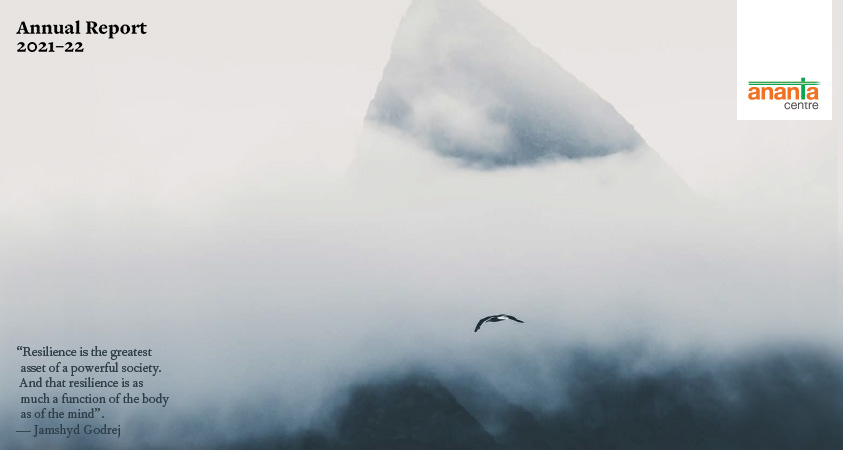Highlights
● High-frequency indicators in April augur well for economy
● Inflation, unemployment down, but no cheer from FDI & exports
● Cheaper Russian crude oil imports, but no impact on retail prices
● Many questions over withdrawal of Rs 2000 currency notes
● Controversy over 20 % TCS on credit card transactions
● RBI dividend bonanza for Centre to bolster its finances
● Adani probe report, Sebi under the lens and LIC gains
● No end to worries over changes in angel tax norms
High-frequency indicators in April augur well for economy
Even as India’s gross domestic product in 2022-23 is expected to show a slightly higher print than the earlier estimate of 7 per cent, the financial year of 2023-24 has begun with a pick-up in high-frequency indicators of the Indian economy, raising hopes of a sustained growth momentum. Collections of goods and services tax or GST in April 2023 grew by 12 per cent to reach an all-time high of Rs 1.87 lakh crore. The previous highest monthly collections were in April 2022 at Rs 1.68 lakh crore, and the March 2023 figure was Rs 1.6 lakh crore. GST collections in April are a function of the usual bump in sales at the end of the financial year. Taxes paid on transactions concluded in March are usually captured in GST collections during April. The record level of GST collections in April 2023, therefore, reflect a boost in year-end sales, improved compliance ensured through the help of data analytics and sustained momentum in economic growth. GST collections during the whole of 2022-23 were estimated at Rs 18.1 lakh crore, which represented a rise of 22 per cent over the previous year. Not just GST collections, railway freight carriage had touched an all-time high of 145 million tonnes in March. Digital payments on Unified Payments Interface or UPI rose 43 per cent to Rs 14.1 lakh crore in April 2023, just as the volume of UPI transactions also rose 59 per cent to 8.9 billion. Domestic passenger vehicle sales saw a 13 per cent jump in wholesale despatches to 3.32 lakh units in April, buoyed by robust demand, even though retail sales were a little muted. Confirming the positive uptick in high-frequency indicators was the April figure for domestic passengers flying in April. The average daily domestic air passenger traffic in April 2023 increased by 2.3 per cent month-on-month to 4.29 lakh passengers. Average daily international air passenger traffic, however, was marginally down by 1 per cent month-on-month to 1.72 lakh passengers. Even India’s purchasing managers’ index (PMI) for manufacturing in April increased to a four-month high of 57.2 from 56.4 in March. A number above 50 indicates expansion in manufacturing and anything below 50 signals contraction, according to the PMI survey.
Inflation, unemployment down, but no cheer from FDI & exports
In May, the government could heave a sigh of relief on the prices front. India’s retail inflation, measured by the Consumer Price Index, fell in April to an 18-month low on the back of a high base and easing price pressures across most categories of commodities. At 4.7 per cent in April 2023, against 5.66 per cent in the previous month, the latest retail inflation print is expected to strengthen the stance of those members of the RBI’s Monetary Policy Committee, who would like the pause in interest rate increases to be continued during its monetary policy review scheduled for June 2023. For the second month in a row, retail inflation was below the upper tolerance band of the inflation target. While the inflation target is 4 per cent, there is a margin of two percentage points on either side. For wholesale prices, the April number, based on the Wholesale Price Index, showed that they fell. The index contracted by 0.92 per cent in April, compared to 1.34 per cent inflation in March 2023. On the jobs front, the latest Periodic Labour Force Survey of the National Statistical Office showed that India’s urban unemployment declined in the fourth quarter of 2022-23 to 6.8 per cent, the lowest in over four years. The labour force participation rate in the January-March quarter of 2022-23 also improved marginally to 48.5 per cent, compared to 48.2 per cent in the previous quarter. While the inflation rate and unemployment data brought some comfort, the numbers on industrial output and exports caused concern to policy makers. Industrial growth in March slowed to 1.1 per cent in March 2023, down from 5.8 per cent in the previous month. The slower industrial growth was driven by a decline in manufacturing output by 0.5 per cent and a contraction in electricity generation by 1.6 per cent. For the full financial year of 2022-23, industrial growth was estimated at 5.1 per cent, compared to 11.4 per cent in the previous year. Exports of merchandise goods in April fell by 12.7 per cent at $35 billion, while imports saw a sharper decline of 14 per cent at $50 billion, resulting in a 20-month low trade deficit at $15.24 billion. Even foreign direct investment (FDI) during 2022-23 fell by 16 per cent to $71 billion, while foreign equity inflows last financial year saw a sharper fall of 22 per cent to $46 billion. Clearly, global economic headwinds have begun to affect India’s performance in exports and foreign investments.
Cheaper Russian crude oil imports, but no impact on retail prices
Russia consolidated its share in India’s crude oil market in April 2023. The share of Russian Urals in India’s total crude oil imports was just 1.4 per cent in March 2022, a month after Russia invaded Ukraine. This had led to international sanctions on the crude oil from Russia. However, India used an escape clause in the sanctions (a ceiling on Russian crude oil price) to increase its Urals imports, which accounted for almost 28 per cent of India’s total crude oil imports by December 2022. In the process, Russia had become the single largest supplier of crude oil to India, relegating Iraq, Saudi Arabia, the United Arab Emirates and the United States to the second, third, fourth and fifth spots, respectively. In April 2023, India imported about 59 million barrels of crude oil from Russia, about 42 per cent of its total crude oil imports. The shares of Iraq and Saudi Arabia in the Indian crude oil market were down to 18 per cent and 15 per cent, respectively. Since, Russian Urals are cheaper than Brent crude oil from West Asia, Indian refiners have been benefitting from higher refining margins. Indian Oil Corporation, which is the biggest public sector buyer of Russian oil, has seen its gross refining margin rise to $19.52 per barrel in 2022-23, compared to $11.25 per barrel in the previous financial year. Other oil refiners have also benefitted from a higher margin. This improvement is also because the Indian crude oil basket price (excluding the impact of Russian Urals) fell from $116 a barrel in June 2022 to $75 a barrel in May 2023. However, the fall in crude oil import cost is yet to translate into lower retail prices of petrol and diesel in the country. Since April 2022, retail prices of these two petroleum products have remained unchanged. Technically, oil companies are free to sell their products at a price determined by them. But their retail pricing decisions are influenced by the government. One argument in favour of keeping the retail price of petrol and diesel unchanged is that the marketing companies had not raised their prices when the Indian crude oil basket price had risen sharply last year, and they had to suffer losses. Thus, by keeping the retail prices unchanged, these refining and marketing companies are making good the losses they had incurred earlier. Meanwhile, consumers of petrol and diesel will keep waiting for a price cut benefit and the government will enjoy increased dividends from the state-owned oil companies, which have made profit in 2022-23.
Many questions over withdrawal of Rs 2000 currency notes
In a late-afternoon surprise announcement on May 19, the Reserve Bank of India told the nation that it was withdrawing Rs 2,000 currency notes from circulation. The RBI announcement clarified that these high-value currency notes of Rs 2,000 denomination would remain legal tender and holders of these notes could either deposit or exchange them from banks with effect from May 23. The facility for exchange and deposit of notes was to be available until September 30, 2023. There was a cap of 10 notes of Rs 2,000 value for exchange, but there was no cap on the number of such notes that could be deposited. The central bank cited two reasons for the withdrawal of the notes – the enforcement of its “Clean Note Policy” aimed at removing damaged, counterfeit or soiled notes from circulation and the policy on removing such currency notes because of the lack of their usage. The Rs 2,000 currency notes had been introduced in November 2016, soon after the Modi government had demonetized almost 86 per cent of the currency in circulation by declaring that the Rs 500 and Rs 1,000 denomination notes would cease to be legal tender. This time the RBI is yet to rob the Rs 2,000 notes of their legal tender status, although that possibility is not ruled out after September 30, 2023. Since its introduction in 2016, the value of the Rs 2,000 currency notes in circulation has declined to Rs 3.62 lakh crore, or just about 11 per cent of the value of the total currency in circulation. In 2017, the share of these high-value notes was almost 50 per cent. It is not clear why it became necessary for the RBI to set a deadline for withdrawing the Rs 2,000 currency notes by allowing them to be exchanged or deposited with banks until September 30, 2023. Some analysts believe that this deadline may be extended, while others are not that sanguine about the extension. If indeed the facility of exchange and deposit of these currency notes ends on September 30, 2023, then it is likely that they will lose their legal tender status soon thereafter. These analysts also argue that the exchange or deposit of Rs 3.62 lakh crore would improve the banks’ credit portfolios, while the government’s tax department would be able to track those who deposited the Rs 2,000 currency notes in large numbers and examine if there was any tax evasion.
Controversy over 20 % TCS on credit card transactions
On May 17, 2023, the Union finance ministry had notified new taxation rules pertaining to international transactions on credit cards held by Indians. The notification gave effect to a Budget announcement made on February 1, 2023. The new rules implied that all international credit card transactions would be brought under the Liberalised Remittance Scheme (LRS). Note that the existing rules for remittances abroad under LRS already mandate that these would be subjected to a 5 per cent tax to be collected at source (TCS), except a few transactions meant for education abroad and medical purposes. The 2023 Budget raised the TCS rate for such LRS transactions from 5 per cent to 20 per cent with effect from July 1, 2023. Now, international credit card transactions have also been brought under the ambit of the LRS rules. In other words, there would be a TCS at the rate of 20 per cent on all international transactions on credit cards. This raised a hue and cry. It was argued that all credit card payments are done through banks, and these can be tracked by tax authorities. The need for a 20 per cent TCS, therefore, was seen as an imposition of an additional financial cost on such transactions. The government, however, argued that international credit card transactions needed to be brought under the ambit of LRS and hence the 20 per cent TCS had to be paid on them as well as in other transactions under LRS. A 20 per cent TCS also meant that the cost of transactions on international credit cards would go up by as much and even though this tax would be refunded after the card holder filed the tax returns, there would be a delay of at least a year before the refund took place. Eventually, the finance ministry reconsidered its decision and on May 19, it modified its TCS policy on international credit card transactions. The 20 per cent TCS remained, but it was clarified that this would be levied only when the annual international credit card transactions exceeded Rs 7 lakh in a year. The headache for credit card holders with annual international transactions of over Rs 7 lakh a year is not gone. And the government is hoping to keep track of more international credit card transactions and collect more revenue on this account, even though some of it may have to be refunded later.
RBI dividend bonanza for Centre to bolster its finances
For the Union government, the Reserve Bank of India (RBI) did a good turn on May 19, 2023. The central bank’s board met that day and approved a surplus transfer or dividend of Rs 87,416 crore to the central exchequer, based on its performance during 2022-23. The surplus was transferred to the Centre after maintaining the contingency risk buffer at 6 per cent of the central bank’s balance sheet size. Indeed, by transferring Rs 87,416 crore to the Union government, the RBI had effectively raised its contingency risk buffer from 5.5 per cent to 6 per cent of its balance sheet size. For 2021-22, the RBI had announced a surplus transfer of only Rs 30,307 crore, while keeping the contingency risk buffer at 5.5 per cent. The sharp increase in the surplus transfer was possible because the central bank had seen its profits from the sale of foreign exchange reserves go up substantially in 2022-23. The Centre had budgeted for a much lower amount of about Rs 48,000 crore in 2023-24 from the RBI’s surplus and dividends from nationalized banks and state-owned financial institutions, compared to Rs 40,953 crore in 2022-23. Remember that such transfers last year were way below the budgeted target of Rs 73,948 crore. Even as the RBI and nationalized banks transferred lower amounts by way of dividend to the Centre, the Union finance ministry had to manage the shortfall. But in 2023-24 it appears that there would be no repeat shortfall under this head. Not just the RBI, but the nationalized banks also are expected to transfer more dividends to the Centre as their shareholder. The excess receipt under this head would be a relief, as the government’s disinvestment revenue during the current year is set to fall short of the target of Rs 51,000 crore, as no fresh cases of privatization or disinvestment are to be taken up in the current year.
Adani probe report, Sebi under the lens and LIC gains
A 173-page report of an experts committee, set up by the Supreme Court, to probe allegations of stock market manipulation and regulatory failure in dealing with such charges against the Adani group, was made public in the third week of May. The report did not reveal much, as it drew a blank as far as its investigations into the alleged violation in money flows from offshore entities into the conglomerate was concerned. Although the report was viewed by the markets as a clean chit to the Adani group, it was in effect an adverse comment on the functioning of the regulatory system managed by the Securities and Exchange Board of India (Sebi). It noted that although there was no evidence of a regulatory failure, Sebi’s investigations could be “a journey without destination”. Sebi’s suspicion of wrongdoing on the question of ownership of portfolio investors in the Adani group was yet to be backed by specific findings or evidence of violation. The upshot of the report of the committee was that the Adani stocks began firming up after its findings became public and the Adani management began holding road shows to revive the projects that had faced uncertainties since January 2023. Indeed, the stocks began recovering some of the losses they incurred after the publication of the research note by American short-seller Hindenburg Research on January 24, 2023. Even the Life Insurance Corporation, which had invested heavily in the Adani group companies found that their investment value, which saw sharp erosion after January, had recovered by 54 per cent to about Rs 45,000 crore. The Hindenburg research had accused the Adani group of stock manipulation and accounting fraud, in addition to raising questions on how the ownership pattern of the group and the minimum public shareholding norms, stipulated by Sebi, were allegedly violated. All the charges levelled by Hindenburg Research were denied by the Adani group. As interesting as these findings and the stock market developments was the composition of the committee. Headed by retired Justice Abhay Manohar Sapre, the committee’s other members included Justice J.P. Devadhar (retired), K.V. Kamath, former managing director and CEO of ICICI Bank, Om Prakash Bhatt, former chairman of the State Bank of India, Nandan Nilekani, Chairman of software giant Infosys and Somasekhar Sundaresan, a lawyer specializing in corporate law, financial sector regulation and competition law. The committee was formed after the shares of the Adani group, an infrastructure giant, fell sharply after the release of the report by Hindenburg Research.
No end to worries over changes in angel tax norms
What was introduced by the United Progressive Alliance (UPA) government in 2012 has now been made more complex and troubling. The Finance Act, 2012 had introduced what was called the angel tax, levied on capital raised by unlisted companies. Thus, with effect from April 1, 2013, unlisted companies in India receiving consideration for the sale of their shares to Indian residents became liable to pay income tax if the consideration exceeded the fair market value. The tax would be levied on the amount of excess consideration. This move was aimed at preventing the generation and use of unaccounted money for subscribing to shares of a closely held and unlisted company at a price, which was higher than fair market value. The manner of calculating what a fair market value of shares of an unlisted company was quite complex and prone to disputes. Nevertheless, the angel tax was being levied since 2013 and the affected parties were mostly start-up companies. In February 2023, the Union Budget tweaked the angel tax provisions significantly. Earlier, the angel tax was applicable only for investments received from resident investors. But the Finance Act, 2023 enforced it on non-resident investors as well. Thus, the premium received by a start-up unlisted company while issuing shares in excess of “fair value” to non-resident Indians were also taxed in the hands of the company. There was an interesting exception to the new rule. Start-ups, registered with the Union department of promotion of industry and internal trade were exempted from the angel tax provisions. But several start-ups, not registered with the government were not expected to cough up that tax on the portion of share proceeds considered to be above fair value. In response to the hue and cry over the changes in the angel tax provisions, the government on May 19 tried to soften the blow of the new instrument. It exempted a broad group of foreign investors from the ambit of the angel tax. These investor groups included most public funds, banks and insurers. The government also widened the scope of valuation of unlisted shares, to make it easier for Indian companies to justify the premium received by them while issuing shares to foreign investors. Less than a week later, on May 25, the government issued a clarification to exempt from the angel tax sovereign wealth funds, pension funds, Category I foreign portfolio investors and investments routed through 21 countries including the United States, the United Kingdom, Germany and Australia. However, investors from countries like Mauritius, Singapore and Luxembourg were not exempted from the angel tax. Not surprisingly, the clarification raised many more troubling issues, raising fears of rerouting of such investments through countries that are excluded from the ambit of the angel tax.





















